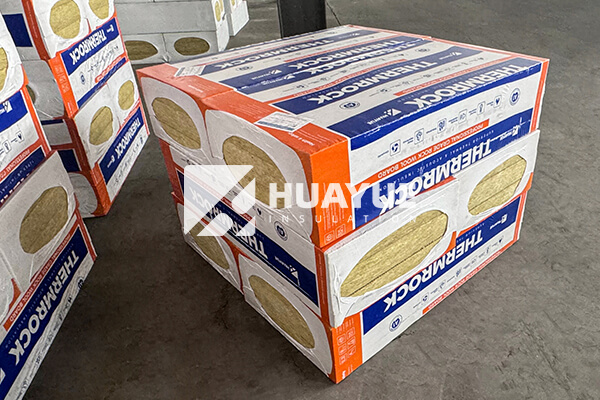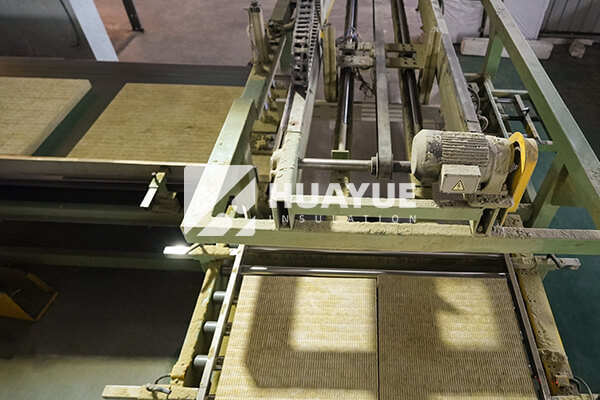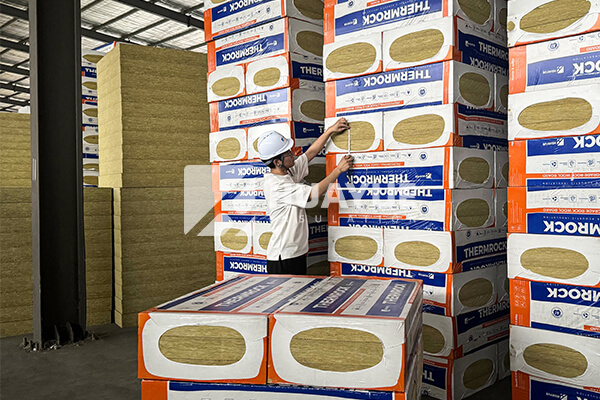What Is the Real Insulation Value of Rockwool and How Do You Calculate It?
Are you struggling to select the right insulation and feeling confused by different technical terms? Proper insulation directly affects safety, comfort, and energy bills.
The R-value of HUAYUE rockwool measures its resistance to heat transfer. The higher the R-value, the better the insulation. You can calculate R-value using the exact thickness and thermal conductivity of the product.

Choosing the right insulation means you need to understand what R-value actually tells you. People often see numbers tossed around but don’t realize that the R-value calculation is straightforward if you know the product specs and measure thickness carefully. Next, I’ll break down exactly how to get accurate R-value.
How Do You Calculate the R-Value of HUAYUE Rockwool?
Feeling overwhelmed by formulas and numbers when comparing insulation options? You’re not alone. Those numbers actually come down to a simple calculation, especially with good product data.
To calculate the R-value of HUAYUE rockwool, use the formula: R = d/λ. Measure thickness in meters (d) and get thermal conductivity (λ) from HUAYUE product sheets. Divide thickness by thermal conductivity for your answer, expressed in m²·K/W.

The R-value calculation boils down to two things: material thickness and thermal conductivity. For HUAYUE rockwool, thermal conductivity usually ranges from 0.035 W/(m·K) to 0.045 W/(m·K). Get this number from HUAYUE’s certified product sheet or official testing. For thickness, I use both a tape measure and a caliper and always make sure the reading is exact down to the millimeter, since even small errors can shift results.
Say you have HUAYUE rockwool board that’s 100 mm thick (0.1 m) and has λ = 0.04 W/(m·K). Plug into the formula:
| Thickness (m) | Thermal Conductivity (W/m·K) | R-value (m²·K/W) |
|---|---|---|
| 0.1 | 0.04 | 2.5 |
This means a single layer of 100 mm HUAYUE rockwool yields an R-value of 2.5. If you use two layers—for example, 50 mm and 100 mm—you add their R-values together. So it’s easy to tailor the insulation system.
What Are the Main Factors Affecting HUAYUE Rockwool’s R-Value?
Ever wonder why two different batches of HUAYUE rockwool have different insulation values? The answer lies in three simple properties that you can check before making a purchase.
The R-value rises with thicker boards, higher density, and better fiber uniformity. HUAYUE’s manufacturing technology ensures consistent fiber structure and high density, delivering reliable insulation across batches.

Let’s dig into the three main variables: thickness, density, and production methods. First, thicker HUAYUE rockwool equals a higher R-value. A board of 25 mm (about 1 inch) can have R-value from 3 to 4; at 100 mm (about 4 inches), it jumps to 12 or higher. Second, increased density (common HUAYUE values: 60–160 kg/m³) means less air movement and more thermal isolation. Third, the way HUAYUE makes the fibers matters: their continuous process ensures fine, evenly distributed fibers that resist heat flow. Here’s a breakdown:
| Property | Impact on R-value | HUAYUE Typical Range |
|---|---|---|
| Thickness | Higher = higher R | 25–100 mm boards/tubes |
| Density | Higher = better R | 60–160 kg/m³ |
| Fiber Uniformity | More uniform = higher | Modern continuous fiber layout |
By checking these specs before ordering, you ensure that your project’s insulation meets all performance needs.
What Are Practical R-Value Requirements for HUAYUE Rockwool Applications?
I used to ask myself, “How much insulation is enough?” It turns out it depends on the project—wall, roof, pipe, or even a chemical tank. HUAYUE provides multiple R-value choices you can stack for your needs.
For walls, roofs, industrial tanks, and more, HUAYUE rockwool matches R-value requirements by adjusting thickness and density. For example, residential walls need R 10–20, while roofs need R 20–30. Industrial tanks require R 10–20, which you can reach with either thicker HUAYUE boards or multiple layers.
Walls in homes need an R-value in the 10–20 range, which can be reached with two layers of HUAYUE 50 mm boards. Roofs should have an R-value closer to 30, which means you might use 100 mm thick HUAYUE panels or combine different insulation materials. For tanks in factories, the R-value sits around 10–20, met by 50 mm HUAYUE panels. Here’s what application scenarios look like:
| Application | Recommended R-Value | HUAYUE Solution | Example Thickness |
|---|---|---|---|
| Residential wall | 10–20 | 2 x 50 mm board | 50 + 50 mm |
| Residential roof | 20–30 | 1 x 100 mm board | 100 mm |
| Industrial tank | 10–20 | 1 x 50 mm board | 50 mm |
| Greenhouse | 5–10 | 1 x 25 mm board | 25 mm |
If you want more insulation, just add another board or pipe section. HUAYUE products are easy to layer.
What Installation Details Impact HUAYUE Rockwool’s Final R-Value?
After picking the right material, the final step is getting the installation right. Even the best HUAYUE rockwool won’t deliver promised R-value if installed with gaps or uneven coverage.
Proper installation ensures HUAYUE rockwool reaches maximum R-value. Boards must fit tightly, without gaps. Joints need to be sealed, and no areas left uncovered. Use certified installers for best results.
Here are some basic tips: make sure every piece of HUAYUE insulation fits snugly versus surfaces; avoid compressing the product, since squashing decreases air pockets and lowers R-value; seal all joints with appropriate tapes or mastics; and always check for gaps. In my experience, it’s best to delegate insulation installation to trained crews familiar with these details. Product performance certification is only as good as field performance.
| Installation Tip | Impact on R-value |
|---|---|
| Tight fit (no gaps) | Maximizes insulation |
| No compression | Preserves air pockets |
| Sealed joints | Prevents heat leaks |
| Certified installers | Reduces risk of errors |
With HUAYUE’s easy-to-handle boards and tubes, professional installation is fast, and you get the full value you paid for.
Conclusion
Knowing HUAYUE rockwool’s R-value allows tailored choices for any insulation job. Accurate calculations and proper installation guarantee both safety and energy savings.
You may also be interested in:
Ready to Get Started?
Get in touch with our experts for personalized solutions tailored to your needs.
Get Free QuoteLatest Articles

Glass Wool Fire Rating: How Safe Is Your Insulation?
Dec 25, 2025
Let's Work Together
Ready to take your business to the next level? Get in touch with our team of experts and let's discuss how we can help you achieve your goals.
Get Free Solutions






